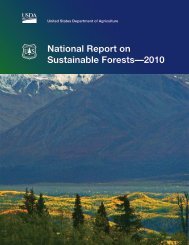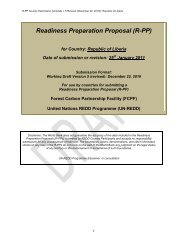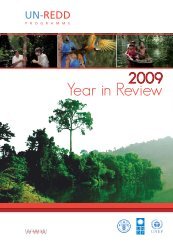pdf 1242 KByte - JIKO
pdf 1242 KByte - JIKO
pdf 1242 KByte - JIKO
You also want an ePaper? Increase the reach of your titles
YUMPU automatically turns print PDFs into web optimized ePapers that Google loves.
Policy Paper: Assessing prerequisites for market-based REDD+ activities 6<br />
to other mitigation activities, costs for setting up institutions and building capacity in host countries, collection<br />
of data and compensating for lost income are substantial. Maintaining these costs at acceptable levels<br />
must be one of the aims when establishing criteria for country participation.<br />
2.4 Equity<br />
The concept of equity is very broad. While in the overall climate debate the question of equity revolves<br />
around the vulnerability of developing countries and responsibility of developed ones (Stern 2008), the concept<br />
is expanded to the subnational level when used in REDD+. More specifically, it refers to the adequate<br />
distribution of costs and benefits stemming from the activities implemented under the mechanism (Angelsen<br />
2009a). Requirements for country participation should be established taking equity concerns into account.<br />
Equity considerations are further closely linked to the thematic area of co-benefits, which was formally recognized<br />
by the Conference of the Parties in Bali 2007 by stating that “reducing emissions from deforestation<br />
and forest degradation in developing countries can promote co-benefits (…)” (UNFCCC 2009). One of these<br />
co-benefits are positive impacts on biodiversity since reduced deforestation also means decline of habitat<br />
destruction and loss of biodiversity (Karousakis 2009). There are several other co-benefits associated with<br />
REDD+, such as socio-economic benefits through the financial flows or improved governance and respect of<br />
the rights of forest-dependent groups through changes in the policies of host countries. Furthermore, REDD+<br />
could also lead to improvements in the capacity of forests and societies to adapt to climate change (Dkamela<br />
2011). If designed accordingly a national REDD+ architecture can actively promote such benefits. On the<br />
other hand, implementation of REDD+ could also have adverse effects on the environment and livelihood of<br />
the local population. Without appropriate regulations, REDD+ activities could result in the conversion of<br />
forests into plantations at the cost of biodiversity. Similarly, REDD+ may have negative implications for<br />
forest dependent communities and indigenous peoples, who could see their access to forest resources curtailed<br />
without being offered a viable alternative. (see also: Arens et al. 2010). These potential adverse effects<br />
make it imperative to establish appropriate criteria for country participation.<br />
Nicolas Kreibich, Christof Arens and Wolfgang Sterk<br />
Wuppertal Institute
















